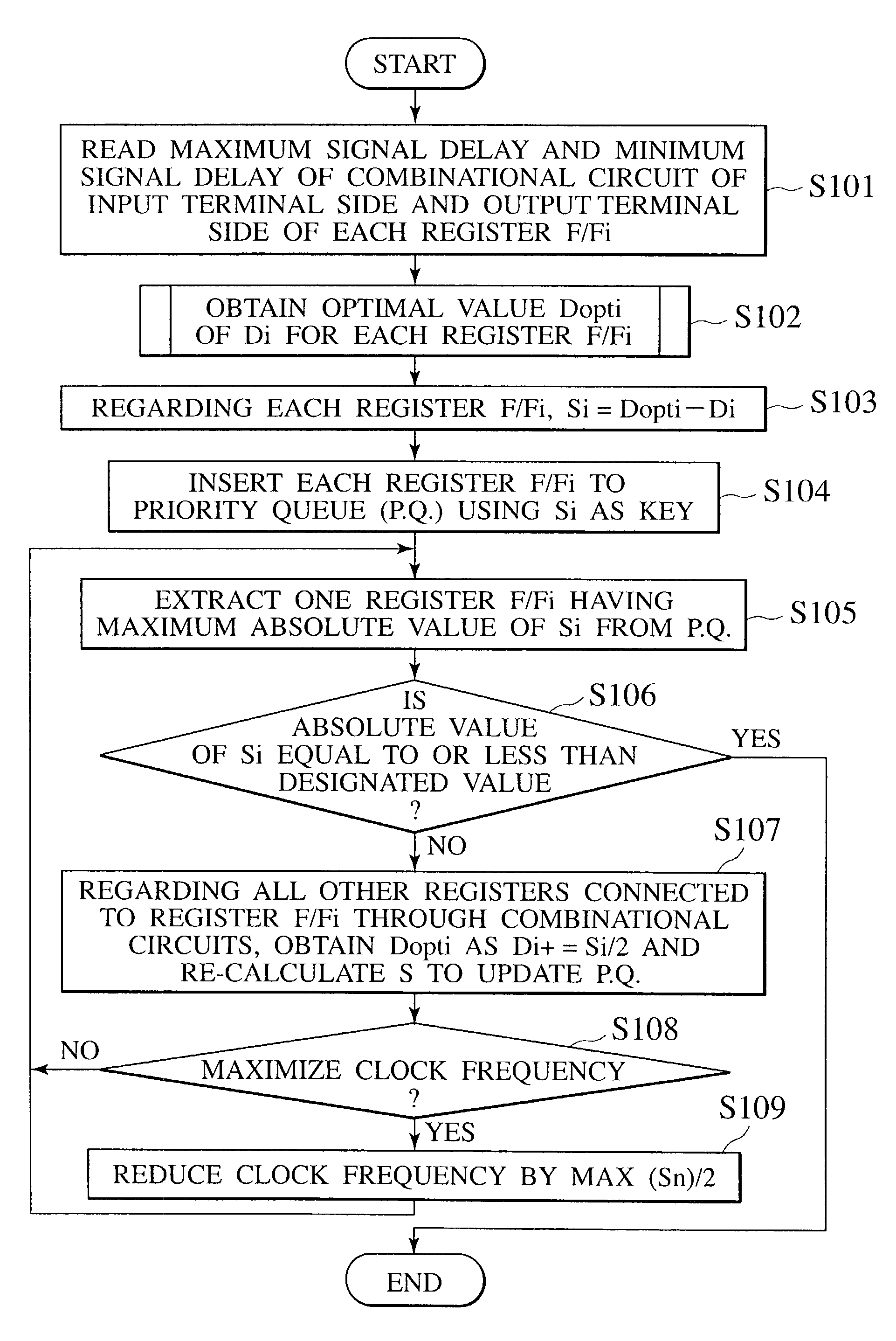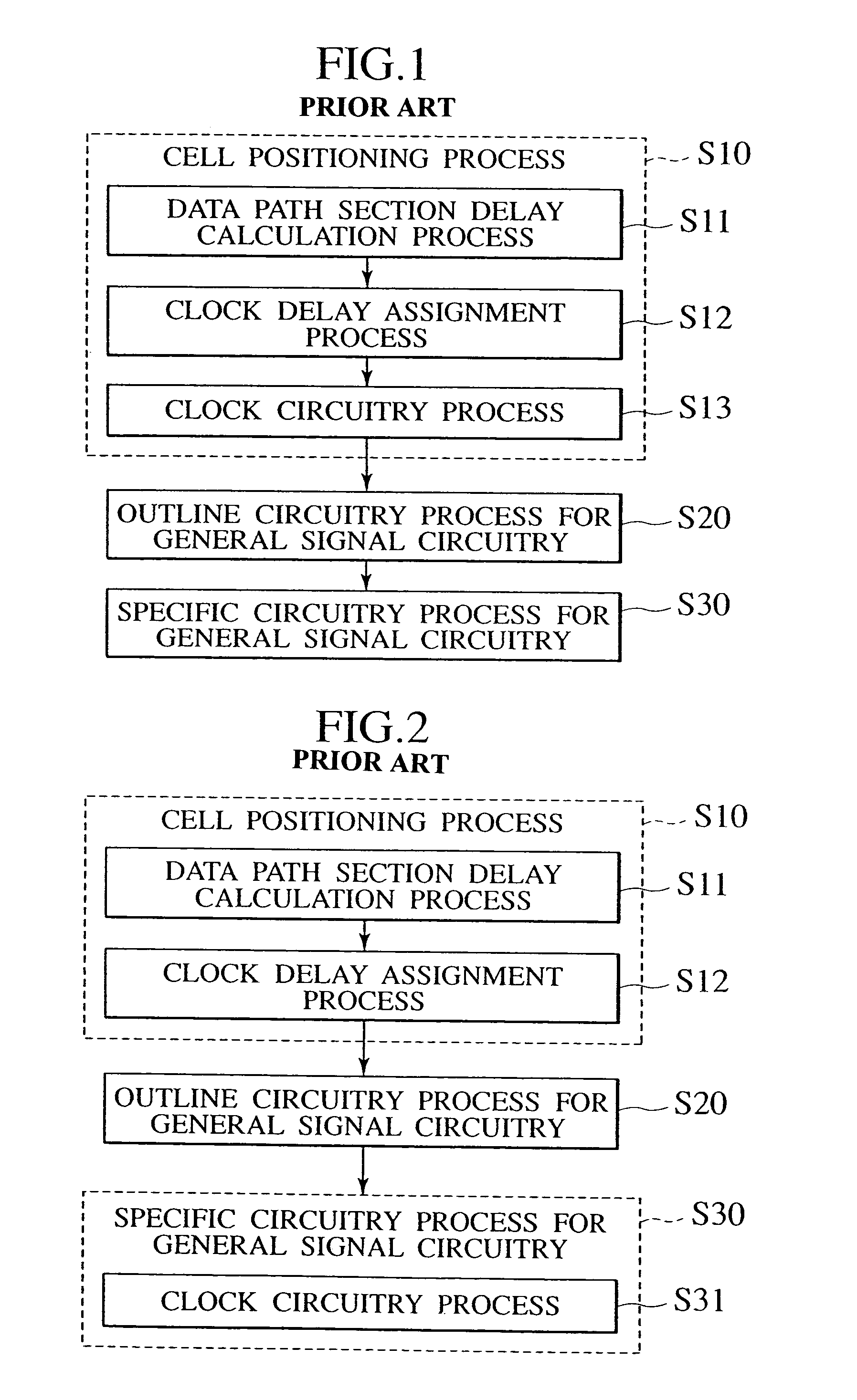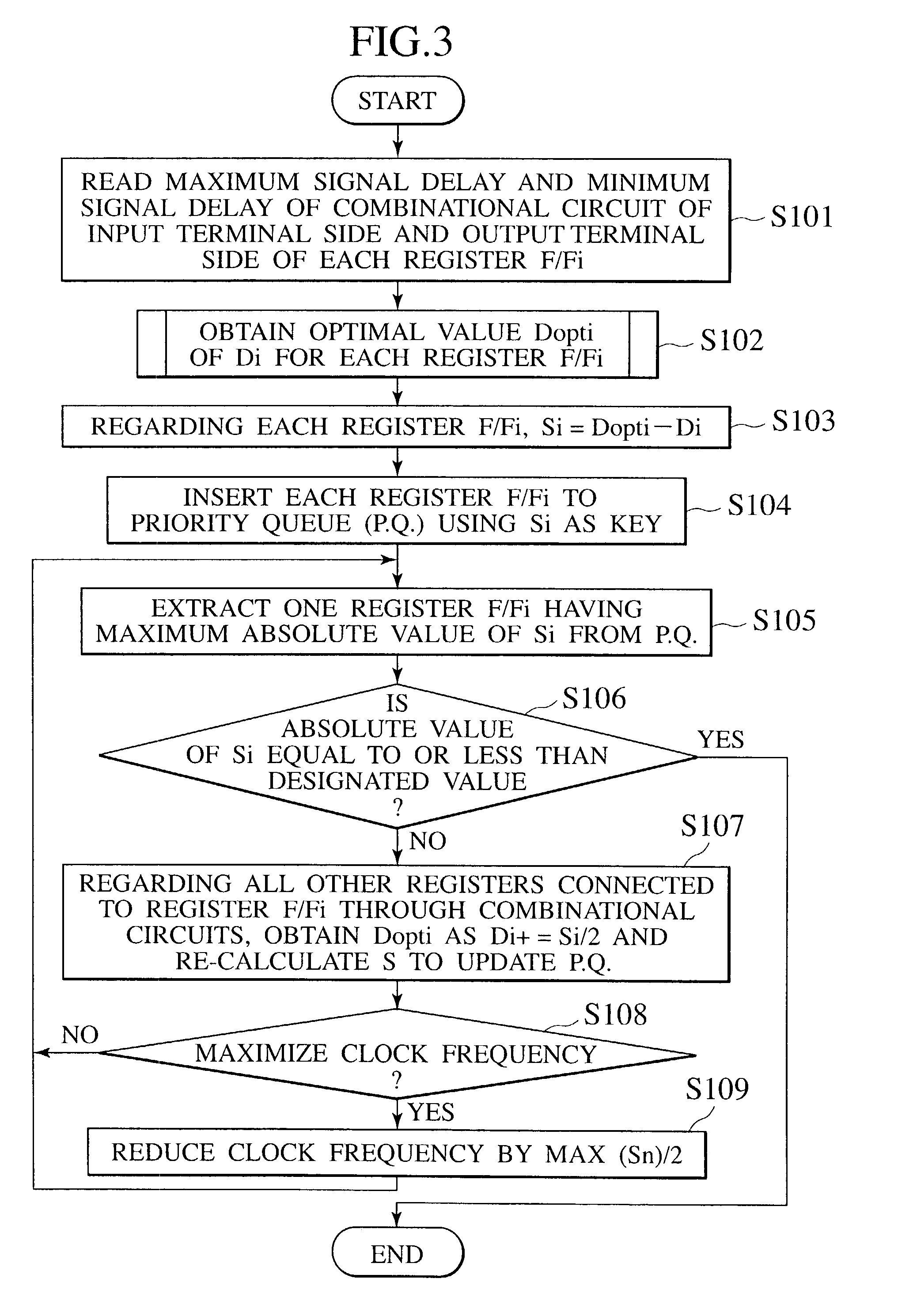Method for distributing clock signals to flip-flop circuits
- Summary
- Abstract
- Description
- Claims
- Application Information
AI Technical Summary
Benefits of technology
Problems solved by technology
Method used
Image
Examples
first embodiment
[0053]A clock distributing method according to a first embodiment of the present invention will be explained with reference to the flowchart of FIG. 3 and the block diagram of FIG. 4. First, a circuit shown in FIG. 4 includes a flip-flop circuit F / Fi (hereinafter simply referred to as F / Fi or F / Fi circuit) 11i that receives an input signal from an external input terminal 10 and a clock signal from a CLK terminal 14, a first combinational circuit 12a that receives an output from the F / Fi circuit 11i, an F / Fj circuit 11j that receives an output from the first combinational circuit 12a and a clock signal from the CLK terminal 14, a second combinational circuit 12b that receives an output from the F / Fj circuit 11j, an F / Fk circuit 11k that receives an output from the second combinational circuit 12b and a clock signal from the CLK terminal 14, and an external output terminal 13 that finally outputs a signal from the F / Fk circuit 11k. Here, it is assumed that the delay time of the clock ...
second embodiment
[0096]The processes in steps of a second embodiment shown by a flowchart of FIG. 6 are substantially the same as those of the first embodiment shown by FIG. 3. However, to obtain a useful skew, it is necessary to add signal delay information of the combinational circuit between the flip-flop circuits F / F, so that the number of combinational circuits becomes considerably large, resulting in an increase in memory amounts and processing time used.
[0097]In order to prevent the above problem, step S401 is performed in the following manner, which is different from the first embodiment, based on the idea that a correct useful skew can be obtained even if the amount of signal delay time information of the combinational circuit is limited.
[0098]Specifically, regarding signal delay time, it is generally necessary to add two kinds including maximum time and minimum time. However, in the second embodiment, (100−n) % of clock cycle Tcp, for example, only information of maximum times over 80% and...
third embodiment
[0107]The processes in steps of a third embodiment shown by a flowchart of FIG. 8 are substantially the same as those of the first embodiment shown in FIG. 3. However, this embodiment is different from the first embodiment in the aspect that high priority is given to either reduction of a setup time constraint violation or that of a hold time constraint violation to obtain an optimal value Dopti at the time of obtaining a useful skew in step S602. The priority is given by the user's designation to either the setup time constraint violation or the hold time constraint violation. In this case, regarding each flip-flop circuit F / Fi, at the time of obtaining Di from a value based on the setup time constraint and that based on the hold time constraint, there is provided a means for deciding Di preferentially to prevent the occurrence of violation in either of these constraints in accordance with the user's designation necessarily.
[0108]FIG. 9 is a sub-routine in step S602. In step S6021,...
PUM
 Login to View More
Login to View More Abstract
Description
Claims
Application Information
 Login to View More
Login to View More - R&D
- Intellectual Property
- Life Sciences
- Materials
- Tech Scout
- Unparalleled Data Quality
- Higher Quality Content
- 60% Fewer Hallucinations
Browse by: Latest US Patents, China's latest patents, Technical Efficacy Thesaurus, Application Domain, Technology Topic, Popular Technical Reports.
© 2025 PatSnap. All rights reserved.Legal|Privacy policy|Modern Slavery Act Transparency Statement|Sitemap|About US| Contact US: help@patsnap.com



